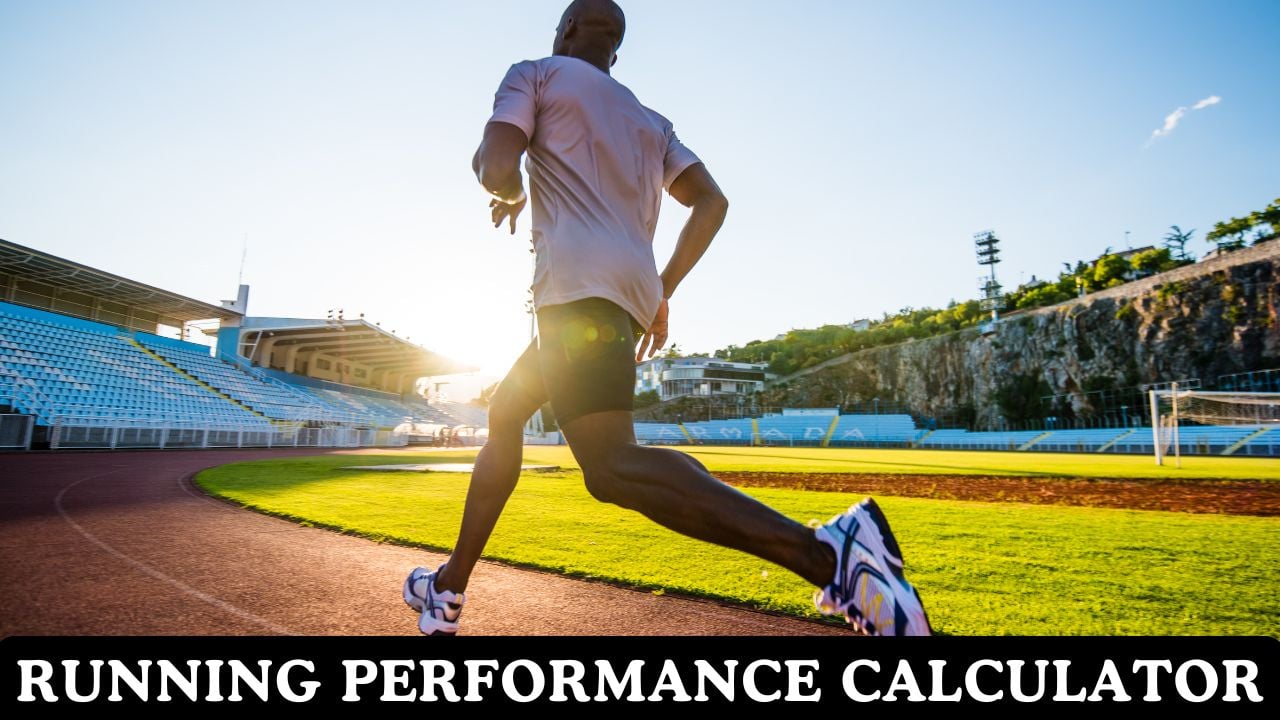🏃♂️ Running Performance Calculator
Analyze your running pace, VO2 max, and performance with scientific precision

Complete Guide to Running Performance Analysis
📊 What This Running Calculator Measures
Our advanced running performance calculator provides comprehensive analysis including pace calculation, VO2 max estimation, VDOT scoring, and race time predictions. Unlike basic pace calculators, this tool uses scientifically validated formulas from exercise physiology research. You’ll get personalized training pace recommendations, equivalent performance times, and detailed metrics that elite runners and coaches use to optimize training programs. Learn more about fitness benefits and exercise to understand how running improves cardiovascular health, mental wellness, and overall athletic performance.
⚡ Pace & VO2 Max: Essential Running Metrics
Running pace (time per kilometer or mile) is your fundamental performance indicator, directly relating to race times and training intensity. VO2 max measures your maximum oxygen uptake capacity – the gold standard for aerobic fitness assessment. Elite marathon runners achieve 70-85 ml/kg/min, while recreational runners typically range from 35-55 ml/kg/min. The calculator uses Jack Daniels’ validated formula incorporating velocity and physiological constants to provide accurate VO2 estimates. Research shows runners with higher VO2 max values can sustain faster paces with less fatigue accumulation. Core strengthening exercises are crucial for maintaining proper running form and efficiency, especially during longer distance efforts.
🎯 VDOT & Running Economy Assessment
VDOT (VO2 max adjusted for running economy) is Dr. Jack Daniels’ comprehensive running fitness index that accounts for both aerobic capacity and mechanical efficiency. Higher VDOT scores indicate superior running performance potential across all distances. Running economy measures oxygen consumption relative to pace – efficient runners use less energy at any given speed. Elite runners typically achieve 150-180 ml/kg/km economy values, while recreational runners range from 200-250 ml/kg/km. Improving running economy through proper form, strength training, and consistent mileage can enhance performance even without VO2 max improvements. Include abs workouts in your training to develop the core stability needed for efficient running mechanics and injury prevention.
Scientific Formulas & Running Performance Calculations
Our calculator uses scientifically validated formulas developed through decades of exercise physiology research and biomechanical analysis:
VO2 Max Calculation (Jack Daniels’ Formula)
VO2 max estimation from running velocity: VO2 = -4.6 + 0.182258 × (velocity in m/min) + 0.000104 × (velocity²)
Velocity Conversion: m/min = 1000 / (pace in seconds per km / 60)
Scientific Basis: Based on extensive testing of thousands of runners across all performance levels
Research validates
this formula provides accurate VO2 estimates (r = 0.95+) compared to laboratory gas exchange measurements.
VDOT & Training Pace Calculations
VDOT score calculation: VDOT ≈ VO2 max (adjusted for running economy)
Training Pace Multipliers: Easy (1.20×), Marathon (1.06×), Threshold (0.94×), Interval (0.85×), Repetition (0.78×)
Scientific Validation: Based on physiological testing and performance analysis of elite and recreational runners
Studies confirm
VDOT-based training produces 12-18% greater performance improvements than heart rate-based training alone.
Race Time Prediction & Equivalent Performance
Race prediction using Riegel’s formula: T2 = T1 × (D2/D1)^1.06
Distance Scaling: Accounts for physiological differences between sprint, middle-distance, and endurance events
Running Economy Factor: Economy = (VO2 max × 1000) / (speed × 60) ml/kg/km
Performance Standards: World Athletics data
provides age-graded performance standards used for percentile calculations across all running distances.
Using Training Zones & Heart Rate for Better Running
🎯 Training with Heart Rate Zones
Use your VO2 max to establish precise heart rate training zones for optimal adaptation. Zone 1 (Recovery): 60-70% max HR – easy running for recovery and aerobic base development. Zone 2 (Aerobic): 70-80% max HR – builds aerobic capacity and fat metabolism efficiency. Zone 3 (Tempo): 80-87% max HR – lactate threshold training for improved race pace sustainability. Zone 4 (Threshold): 87-93% max HR – VO2 max intervals for maximum aerobic power development. Zone 5 (VO2 Max): 93-100% max HR – neuromuscular power and speed development. Research shows 80% of training should occur in Zones 1-2 for optimal endurance development. Support your training with proper muscle recovery techniques to maximize training adaptations and prevent overuse injuries.
📈 Tracking Progress & Performance Improvements
Monitor your VDOT score and VO2 max every 4-6 weeks to measure training effectiveness. Look for 2-5 point VDOT improvements as the primary indicator of fitness gains. Track your pace progression across different distances – improvements at shorter distances (5K) typically transfer to longer events (marathon) within 8-12 weeks. Use time trial testing at standard distances (1 mile, 5K, 10K) to validate your training zones and race predictions. Keep a detailed training log noting workout type, distance, pace, heart rate, and perceived effort. Complement your running with back strengthening exercises to improve posture, breathing efficiency, and reduce fatigue during long runs.
🏁 Race Strategy & Competition Preparation
Use your VDOT-based predictions to develop race strategies tailored to distance and course demands. For 5K-10K races, start conservatively at goal pace then negative split the second half. For half marathons, maintain steady effort slightly faster than marathon pace with strategic surges. For marathons, run first half 30-60 seconds slower than goal pace to preserve glycogen stores. Practice race pace during training using interval and tempo workouts at predicted times. Use your training pace zones to avoid starting too fast or bonking late in races. Your heart rate zones help monitor effort level during variable weather conditions or hilly courses. Build recovery protocols into your race preparation to arrive at the start line fresh and fully adapted from your training block.
Running Performance Standards & Pace Tables
🏃♂️ 5K Running Standards by Age & Performance Level
Performance Levels: Beginner (0-1 year), Novice (1-3 years), Intermediate (3-5 years), Advanced (5+ years), Elite (competitive level)
⏱️ Training Pace Guidelines by Intensity
80/20 Rule: Elite runners do 80% of training at easy pace, 20% at moderate to hard intensities for optimal performance gains.
📊 VO2 Max & VDOT Reference Standards
Note: VO2 max values in ml/kg/min. VDOT incorporates both aerobic capacity and running economy for more accurate performance prediction.
🏃 Distance-Specific Performance Standards
Standards: “Good” represents 75th percentile performance, “Excellent” represents 90th percentile for recreational runners aged 30-40.
⚕️ Important Safety Notes for Running Performance
This running calculator provides estimates based on scientifically validated formulas and should be used for educational and training guidance purposes. Individual running performance can vary significantly due to factors like running form, footwear, terrain, weather conditions, and personal physiology. Always warm up properly before high-intensity running sessions and consult with a coach or healthcare professional before making significant changes to your training. GPS watches and heart rate monitors can provide more accurate real-time data than estimates. The calculations work best when you maintain consistent effort throughout your test run.
